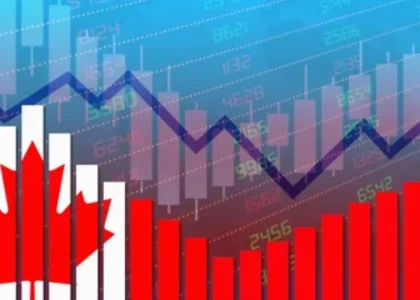Understanding the Canadian Economy

The Canadian economy is a dynamic entity influenced by various factors ranging from domestic policies to global market trends. Keeping tabs on its growth trajectory is crucial for businesses, policymakers, and citizens alike. However, the latest data for May indicates a deviation from expectations, prompting a closer examination of the underlying reasons.
Overview of Economic Growth Indicators
Economic growth is typically measured by indicators such as Gross Domestic Product (GDP), employment rates, consumer spending, and industrial production. These metrics provide insights into the overall health of the economy and its ability to generate wealth and opportunity for its citizens.
Factors Influencing Canadian Economic Growth

Several factors contribute to economic growth, including government policies, trade dynamics, investment levels, and consumer behavior. Understanding how these factors interact is essential for assessing the current state of the economy and predicting future trends.
May Economic Data: What Went Wrong?
May’s economic data revealed a slower-than-expected growth rate, raising concerns among economists and policymakers. Delving into the specifics of the data can shed light on the areas where the economy faltered and identify potential areas for improvement.
Impact on Key Industries

Different sectors of the economy may be affected differently by slower growth. Analyzing the impact on key industries such as manufacturing, services, and agriculture can provide valuable insights into the underlying dynamics at play.
Government Policies and Economic Stimulus Measures
Governments often intervene in the economy through fiscal and monetary policies to stimulate growth during periods of slowdown. Assessing the effectiveness of recent policy measures and their potential impact on future growth is essential for formulating informed decisions.
Analyst Insights and Predictions

Economic analysts offer valuable perspectives on the current state of the economy and predictions for future growth trends. Examining their insights can help stakeholders better understand the underlying factors driving economic performance.
Comparisons with Previous Months
Comparing current economic data with previous months’ figures allows for a more comprehensive assessment of the economy’s trajectory. Identifying trends and patterns over time can provide valuable context for understanding the reasons behind fluctuations in growth rates.
Global Economic Context: How Canada Stands

Canada’s economy is intricately connected to global markets, making it susceptible to external economic shocks and fluctuations. Assessing how Canada stacks up against its international counterparts can provide valuable insights into its competitive position and potential areas for improvement.
Consumer Sentiment and Spending Patterns
Consumer sentiment and spending behavior play a significant role in driving economic growth. Analyzing trends in consumer confidence and spending patterns can provide clues about future economic performance.
Employment Trends and Unemployment Rates

Employment trends and unemployment rates are key indicators of economic health. Examining the latest data on job creation and unemployment can offer insights into the underlying dynamics of the labor market and its implications for overall economic growth.
Projections for the Rest of the Year
Looking ahead, projections for the rest of the year will be crucial for planning and decision-making. Assessing the factors likely to influence economic growth in the coming months can help stakeholders prepare for potential challenges and opportunities.
Strategies for Recovery

While May’s economic data may have fallen short of expectations, it also presents an opportunity to reassess strategies for driving economic recovery. By understanding the underlying factors contributing to slower growth and implementing targeted policies and initiatives, Canada can position itself for a more robust and sustainable economic future.
Click here for more visited Posts!




